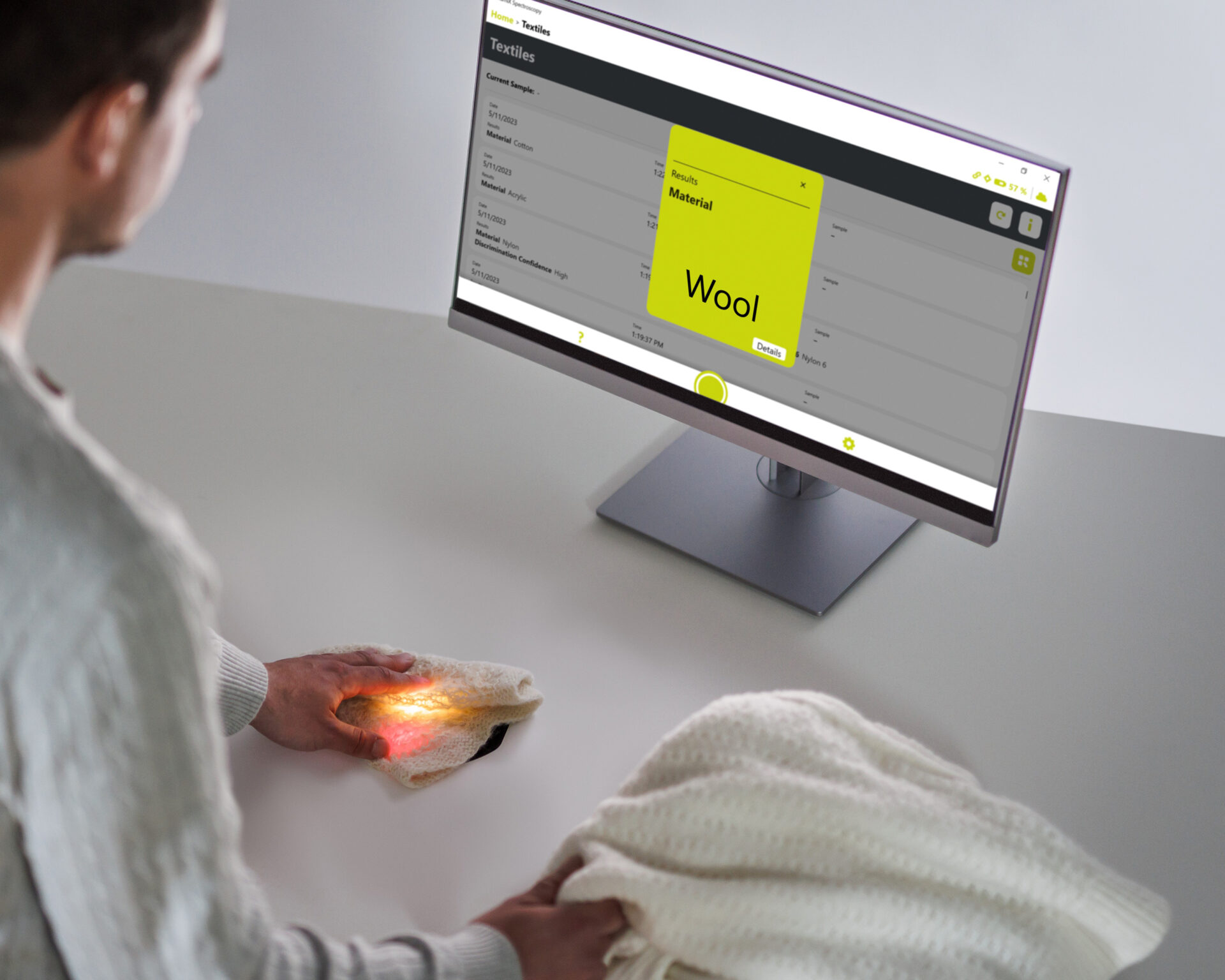Boer Group processes more than 400,000 kilograms of used textiles every day, separating them into 350 different types and qualities for re-use or recycling. In this context, the correct identification of textiles and textile blends is critical to sort them into clean waste streams that are required to recycle textile waste properly into new textile fibres and products.
To further enhance its manual sorting process, Boer Group has deployed Trinamix Mobile NIR Spectroscopy Solution to support employees in reliably identifying the most common textiles and textile blends on the spot in a fast and user-friendly way. Based on an established methodology for material identification, the plug-and-play solution quickly detects the types of textiles. After a brief contact with the sample, the intuitive feedback is immediately displayed on a smartphone, tablet, or computer display. The solution supports a wide range of common textile grades used in clothing, furniture and household goods, for example: acrylic, cotton, nylon 6/6.6, polyester, polypropylene (PP), silk, sisal, viscose, and wool. Textiles made from more than one material can also be identified. These include blends based on acrylic, cotton, nylon, polyester, silk, or wool.
A key advantage for Boer Group lies in the compact design and intuitive handling that allow for flexible integration into existing manual sorting processes and infrastructure. From on-the-spot checks with a handheld device that fits into a user’s pocket to semi-automated setups where customers can integrate the solution into a sorting table for automatically triggered scans: Trinamix combines the advantages of multiple setups in a single, versatile solution.











